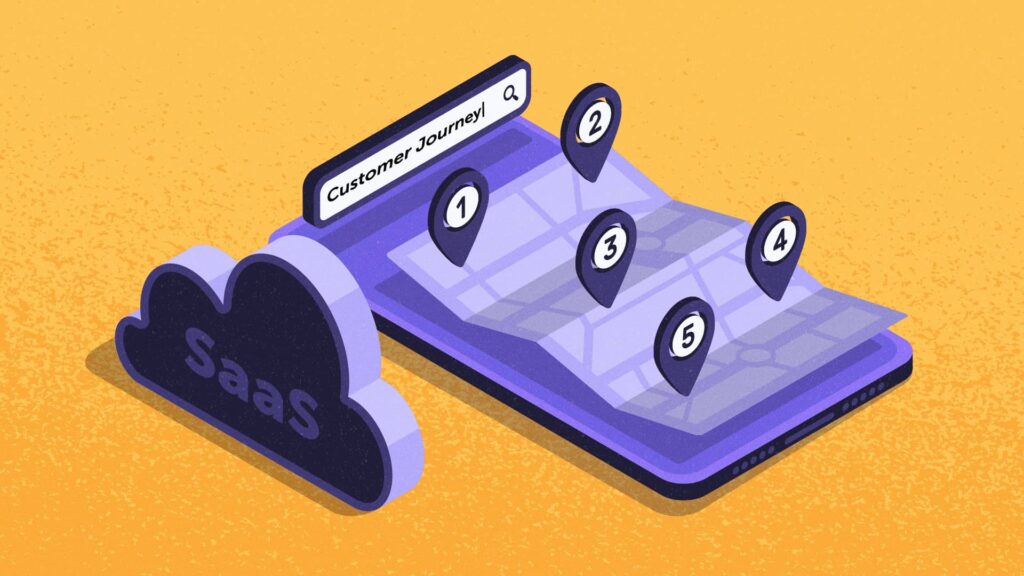Your customer journey map is the foundation for your marketing, sales, and product strategies. That’s how critical it is.
But too many SaaS companies skip creating those maps, relying on assumptions about their customer journeys—or worse, mistaking customer journey maps for marketing funnels.
Let’s break down what a customer journey map is, why you should structure your funnel around it, and how to create one step by step.
What Is a Customer Journey Map in SaaS?
For SaaS businesses, a customer journey map is a visual representation of every stage a customer goes through with your product.
It’s a tool that lets you step into your customers’ shoes and understand their needs, goals, and challenges from their first interaction with your brand all the way to (hopefully) becoming loyal advocates.
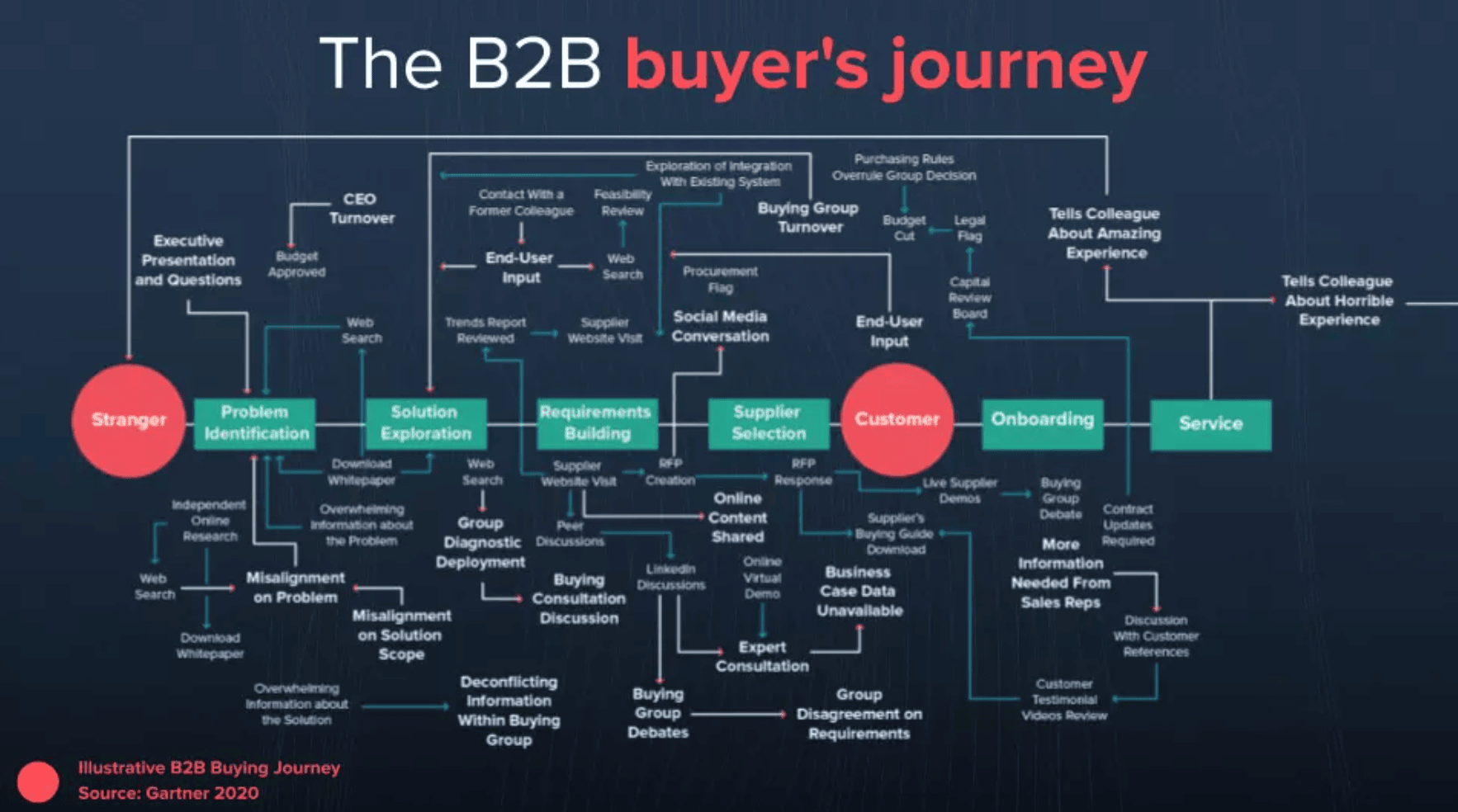
Source: Gartner
Customer journey vs marketing funnel
A lot of people confuse customer journey maps with marketing funnels (or sales funnels, which are essentially the same in this context), and it’s easy to see why. Both typically share the same key stages—awareness, discovery, evaluation, intent, purchase, and loyalty (though the exact stages may vary depending on the product).
But despite these similarities, they have some pretty distinct differences.
The main difference is in the focus. A marketing funnel is all about the brand’s actions aimed at attracting and converting prospects, while a customer journey focuses on what the customer is doing at each stage.
A marketing funnel also tends to be more linear and goal-oriented. It helps to track conversion rates at each stage—from leads to paying customers—and highlights where sales and marketing efforts can push people closer to a sale.
In contrast, a customer journey isn’t linear and doesn’t center around your actions to push prospects toward a sale. Instead, it maps out what potential and current customers experience and do as they interact with your brand, from their first touchpoint through the post-purchase stages.
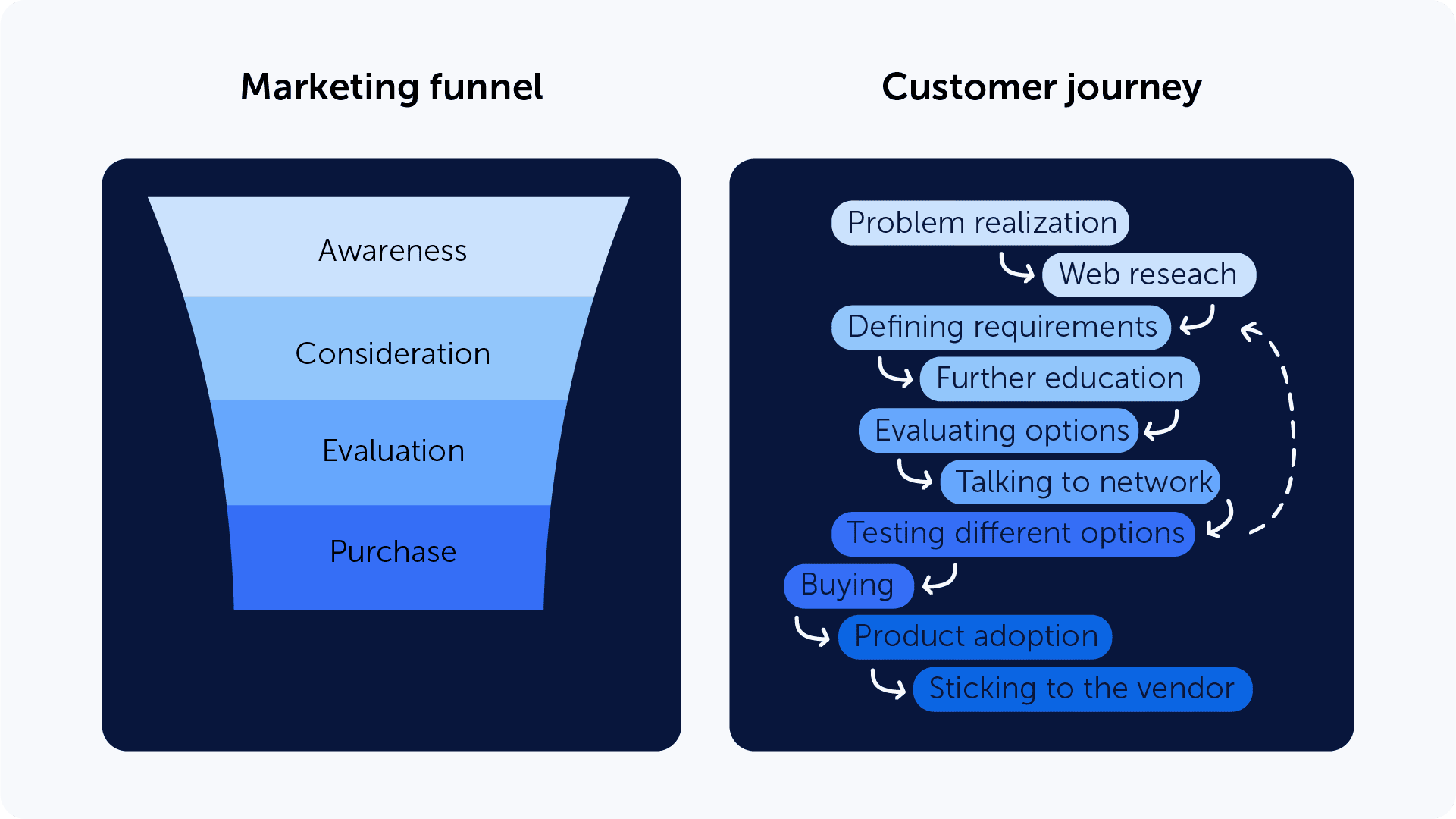
On top of that, while marketing funnels may touch on post-sale stages like onboarding and loyalty, these are often secondary in focus. In a customer journey, however, both pre-sale and post-sale stages get equal attention, emphasizing the full experience of the customer with your brand.
To better understand how these two relate, think of the customer journey as the foundation for a marketing funnel. First, you need a deep understanding of the customer journey—the actions, needs, and decisions customers make at each stage. Then, you build a marketing funnel based on it.
How to Create a Customer Journey Map
Every business has a unique customer journey. To understand and map yours, follow these steps:
1. Get your stakeholders on board
Customer journey mapping isn’t a task just for one department like sales or product. It requires input across multiple teams—including marketing, sales, product, customer support, and customer success.
Each team has insights into different stages of the customer journey: marketers understand the initial touchpoints, salespeople know what converts prospects, product managers have insights into how users engage, and support and success teams see what keeps customers happy (or not).
Start by organizing a workshop or series of meetings dedicated to customer journey mapping. The goal is to break down silos and get everyone aligned on a shared understanding of the customer experience.
2. Talk to your customers
The way your customer journey map will look heavily depends on who you define as your ideal customers. But before making any assumptions about who your ideal customers are and what they do, go straight to the source.
💡 As you bring together different teams, you’re very likely to discover that each of them has their own vision of your ideal customer—and it’s just about time to fix that.
By the time you’re ready to build a customer journey map and have found this article, you likely already have experience with selling your product or are in the midst of developing it. So instead of brainstorming ideal customer profiles (ICPs) and their journeys based on guesses, tap into the conversations you’ve already had—or are currently having—with customers.
Try to answer these questions:
- Who are your highest-value customers so far? What characteristics do they share?
- What’s bringing these customers to you in the first place?
- What are their main hesitations or barriers to buying?
- How long does it typically take them to see the value of your product?
- What questions or concerns come up re>peatedly during the process?
Once you’ve answered these, align everyone involved on the personas you’ve defined and keep these personas at the center of your journey mapping process. When discussing across teams, analyzing data, and mapping out each stage, constantly refer back to the customer characteristics, needs, and challenges you’ve uncovered.
3. Turn to user behavior data
If you’ve been tracking customer behavior, now is the time to put that data to work.
If you don’t have tracking in place yet—or it’s not yet organized—it’s a good idea to work on it now. >Here’s a breakdown of what to focus on in each stage of the customer journey and the tools that can help you capture those insights:
- Pre-sales (awareness)
Use Google Analytics or Mouseflow to track how visitors behave on your website. These tools help you understand where customers are coming from, what pages they visit, and how long they stay.
💡Pro tip: Follow your visitors’ paths on your website with Mouseflow’s journey mapping tool. It shows where users go from a specific page or, conversely, the paths they took before landing on that page. You’ll be able to spot the most common routes visitors typically take and eliminate the guesswork from the process of mapping your customer journey.
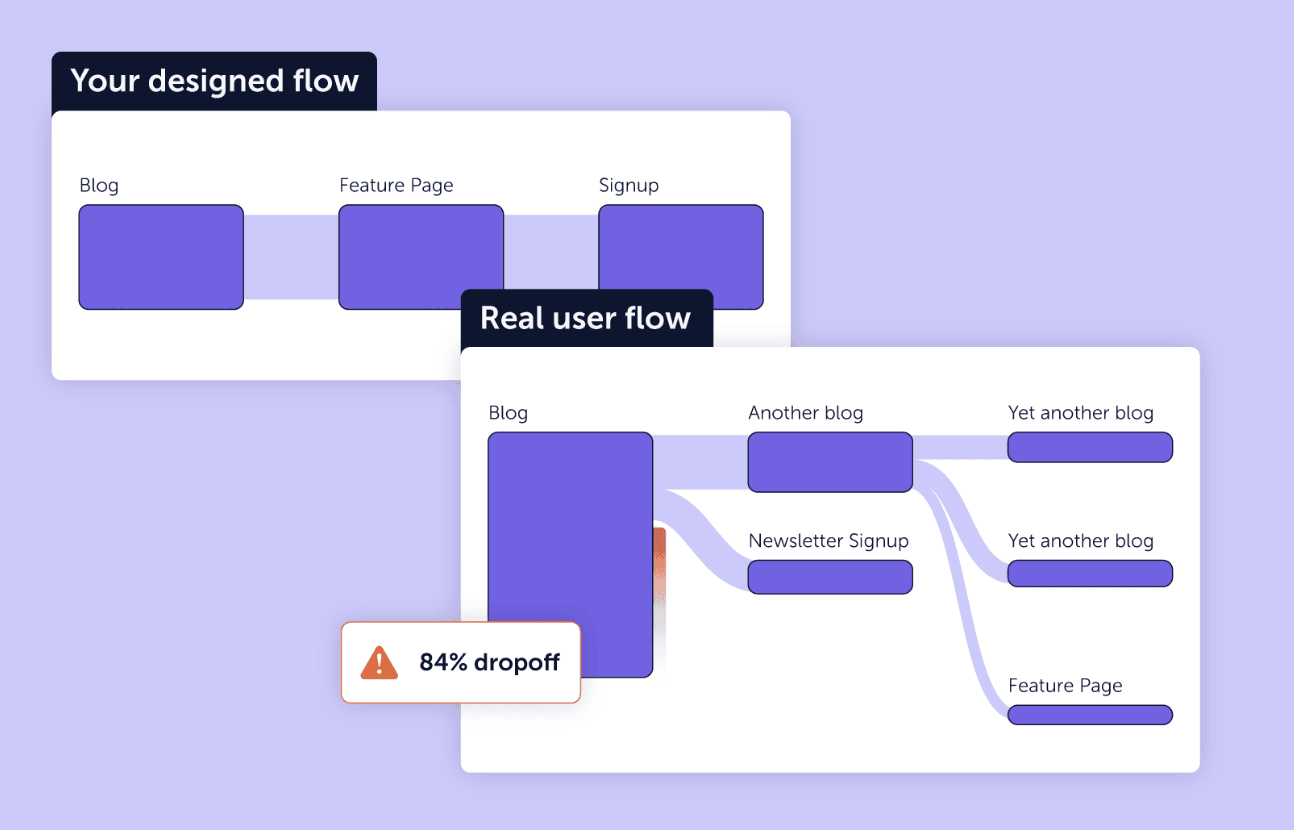
- High-intent engagement tracking (consideration)
Once you’ve spotted potential intent (e.g., through a form submission or demo request), track customer interactions using a CRM system like HubSpot, Salesforce, or Zoho CRM. These tools allow you to monitor lead activity, such as emails opened, links clicked, and meetings booked. You’ll get a clear picture of how prospects are engaging with your sales team and what their decision-making process looks like.
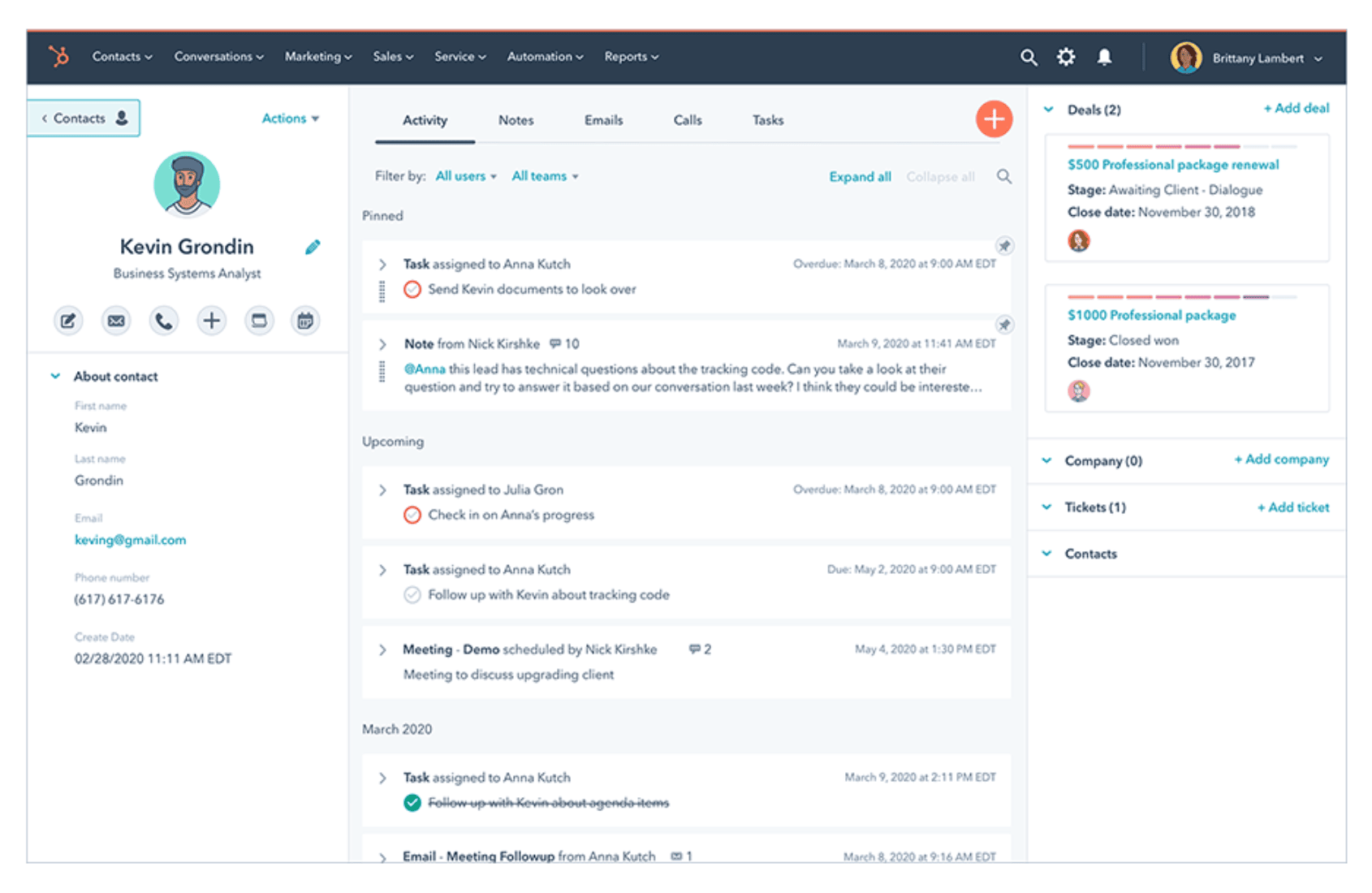
- In-product behavior & feedback (trials and post-sales)
To track the in-product behavior of trial users and existing customers, use product analytics tools like Mouseflow. These tools will uncover insights into how users navigate your product, the paths they take most often, and where they might encounter friction.
💡 Pro tip: In Mouseflow, you can tag your trial users to closely monitor their interactions and uncover potential reasons they aren’t converting to paid users. You can review individual sessions and watch real session recordings to identify frustration points. Are they reaching the “aha! moment” you designed, or are they missing key features that lead to it? Mouseflow’s Session Replay feature lets you find the answer.
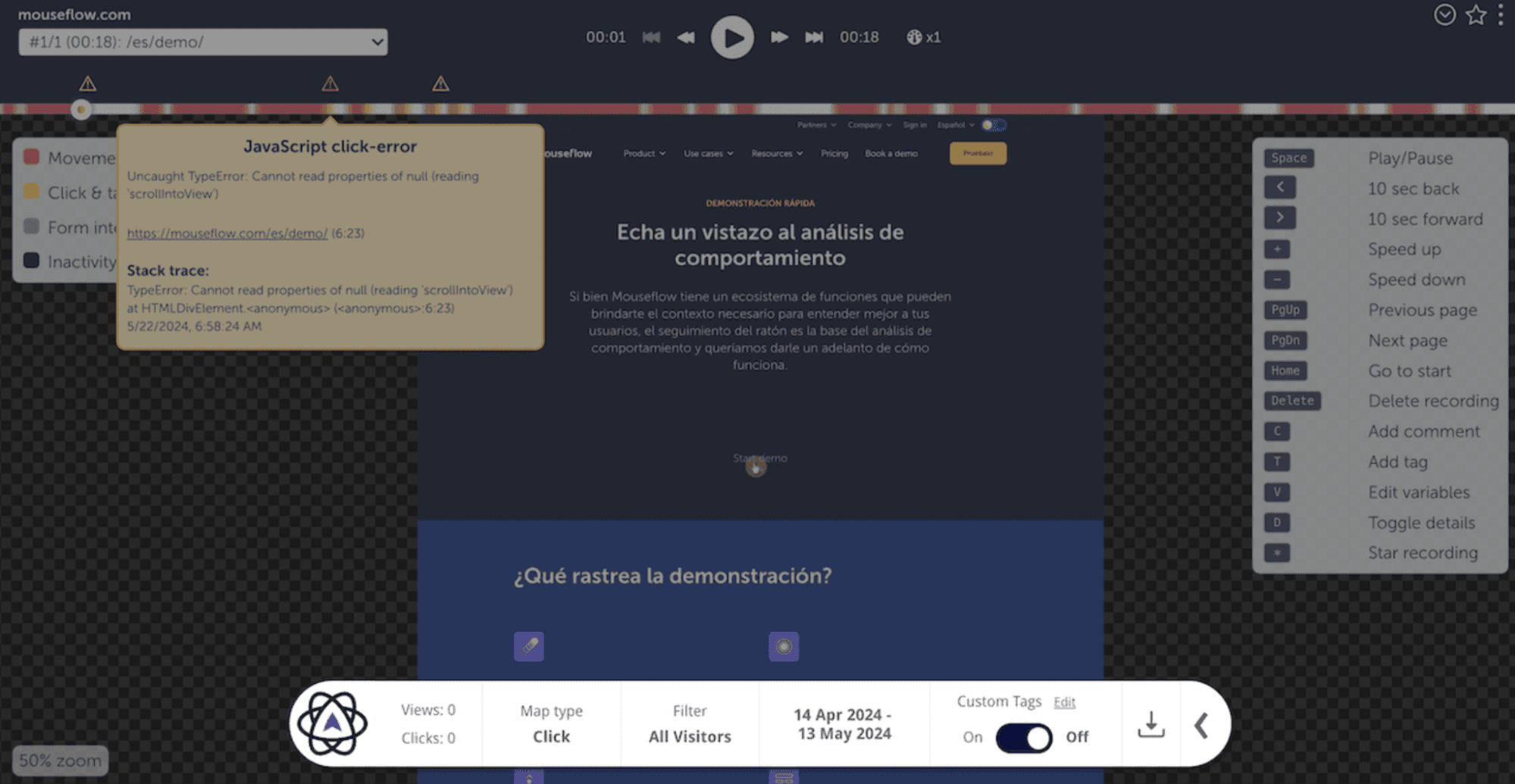
You can also gather feedback through surveys or user testing to better understand the reasons behind certain behavior patterns.
💡 Pro tip: Set up in-app surveys triggered by specific actions, like when users interact with certain features. Use this data to adjust your touchpoints—adding or removing them based on what you learn—to optimize the user experience.
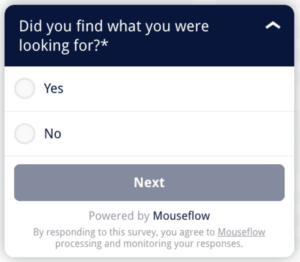
4. Map out real customer journeys
Now, use the insights you’ve gathered to outline the actual journey your customers take.

“Understanding the customer journey in B2B isn’t just about tracking big milestones like sign-ups or cancellations.
It’s about capturing every interaction to get a clear picture of how customers engage over time. The results may surprise you!”
For a moment, forget about standard journey maps and the stages you think they should include. Take a look at the journey of your highest-value customer. Collect insights from all the stakeholders on how this particular customer discovered you, the steps they took along the way, and what their path looked like.
List out every meaningful touchpoint that shaped their experience. Maybe they clicked on a paid ad, then explored your blog, signed up for a demo, spent two months getting internal buy-in, and now they’re facing challenges bringing their team to adopt the software. All of these are critical to creating a realistic customer journey map.
5. Break down the journey into stages
Take the raw journey data you’ve gathered and start breaking it down into clear stages that mirror the phases your customers go through. These could be:
- Problem identification
- Solution exploration
- Requirements building
- Supplier selection
- Onboarding
- Service
These stages will correspond with the marketing funnel stages like awareness, orientation, consideration, decision, onboarding, and loyalty.
For each stage, layer in the specific touchpoints you uncovered during your research—everything from initial interactions to key moments that shaped the customer’s experience. Here’s how the resulting map may look:
- Problem identification
Touchpoints:- Landing on your website from a paid ad or search result
- Reading blog posts or whitepapers on pain points
- Watching introductory videos or webinars
- Engaging with your brand on social media
- Solution exploration
Touchpoints:- Exploring product pages to understand features and benefits
- Attending a product demo or viewing demo videos
- Reading case studies and customer testimonials
- Interacting with sales or support through live chat
- Requirements building
Touchpoints:- Downloading buyer’s guides or product comparison sheets
- Engaging in Q&A sessions with sales or product experts
- Using self-assessment tools or checklists
- Viewing detailed feature breakdowns or FAQs
- Supplier selection
Touchpoints:- Reviewing pricing plans or request-for-proposal (RFP) resources
- Scheduling follow-up calls with sales for final questions
- Engaging with customer success to understand onboarding support
- Requesting referrals from existing customers
- Onboarding
Touchpoints:- Receiving a welcome email with setup instructions
- Accessing product walkthroughs and in-app tutorials
- Attending onboarding webinars or training sessions
- Connecting with a dedicated onboarding specialist
- Service
Touchpoints:- Accessing ongoing support through chat or email
- Providing feedback through customer satisfaction surveys
- Engaging with customer success managers for strategy check-ins
- Participating in user communities or product forums
6. Monitor and adjust
Over time, you’ll gain a clearer understanding of which touchpoints consistently create patterns and which are more random and likely don’t belong on your map.
Set up regular check-ins with the teams involved—sales, marketing, customer success, and product—so you can review and tweak the map based on new insights or changes in customer behavior.
Customer Journey Map Templates
Your customer journey map is closely tied to your sales model, which is typically shaped by factors like product complexity, pricing, and target audience. Most SaaS companies blend self-service and sales-led approaches, allowing users to either complete the buying process on their own or interact with a sales team.
Whether you’re blending both models or using one specific approach, it’s important to create separate journeys for each.
Self-service customer journey map template
This template is designed for SaaS companies that offer a self-service (or product-led) model where customers can sign up and purchase on their own, with minimal sales interaction.

Source: Textmagic
Sales-led customer journey map template
This template is for SaaS companies that follow a sales-led model, where potential customers engage with a sales team at key stages of the journey.
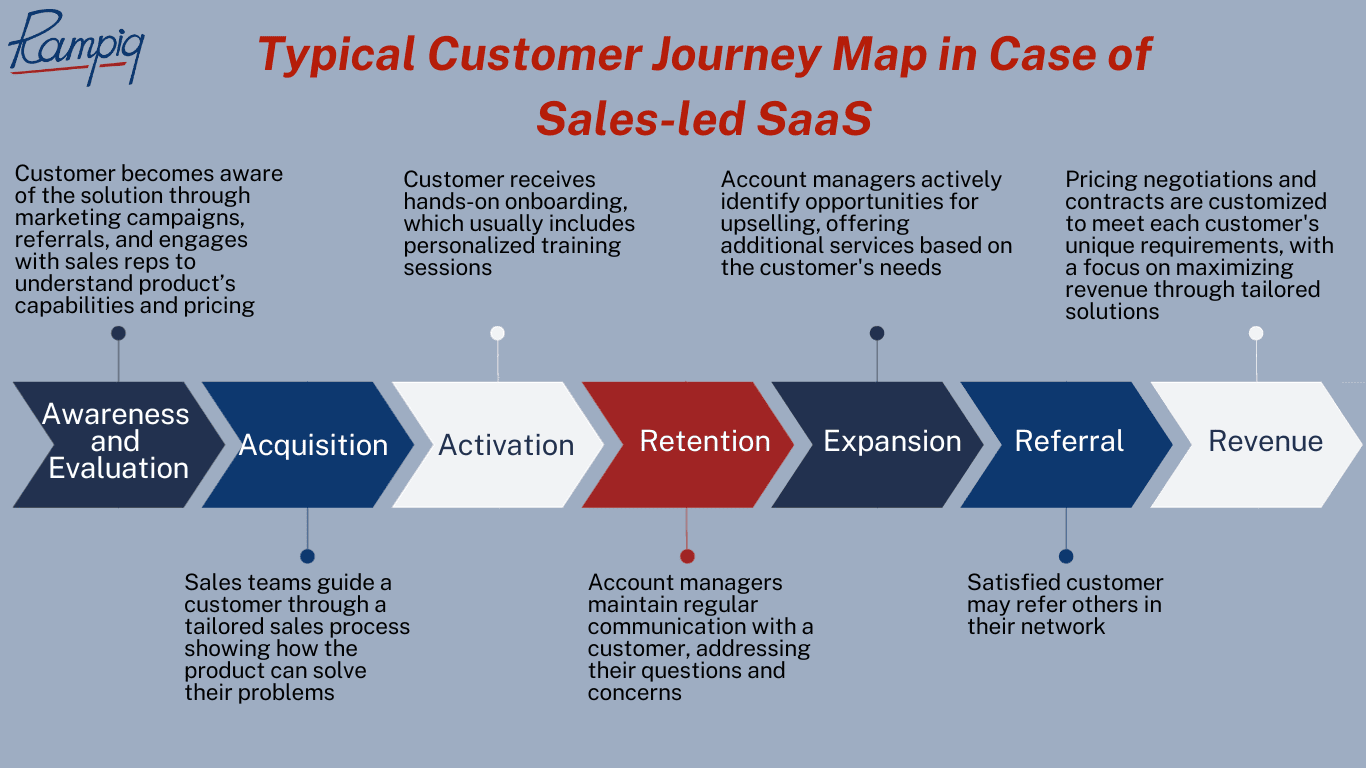
Source: < a href=”https://rampiq.agency/blog/b2b-saas-customer-journey-mapping/”>Rampiq
Build a Realistic Customer Journey Map
The web is packed with customer journey map templates that often follow similar stages and touchpoints.
But your journey map doesn’t need to look exactly like those.
Customer journeys aren’t something you can copy-paste; they’re unique to your product and audience. Instead of trying to fit your customers into a predefined map, let their actual behaviors and needs shape it.
So gather data, get buy-in from your teams, and create a journey map that reflects your customers’ real experiences—one that works for your SaaS.
